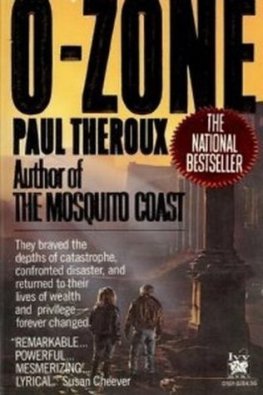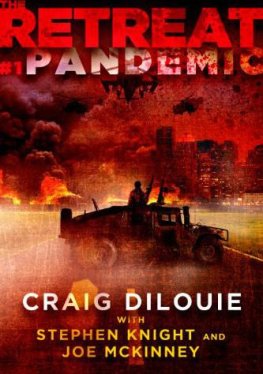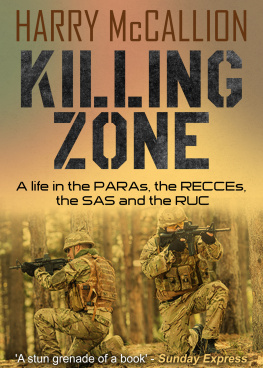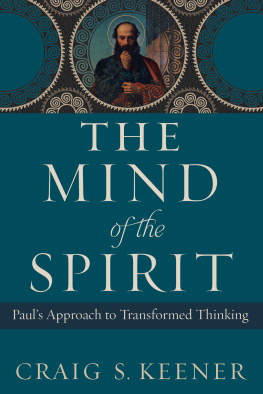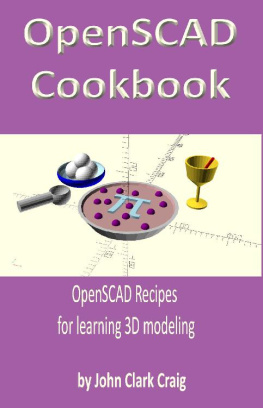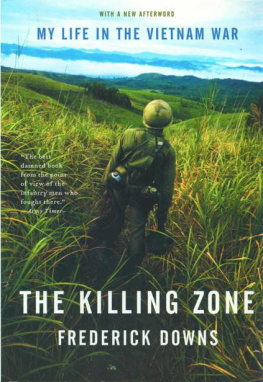Paul A. Craig - The Killing Zone
Here you can read online Paul A. Craig - The Killing Zone full text of the book (entire story) in english for free. Download pdf and epub, get meaning, cover and reviews about this ebook. year: 2013, publisher: McGraw-Hill Education, genre: Romance novel. Description of the work, (preface) as well as reviews are available. Best literature library LitArk.com created for fans of good reading and offers a wide selection of genres:
Romance novel
Science fiction
Adventure
Detective
Science
History
Home and family
Prose
Art
Politics
Computer
Non-fiction
Religion
Business
Children
Humor
Choose a favorite category and find really read worthwhile books. Enjoy immersion in the world of imagination, feel the emotions of the characters or learn something new for yourself, make an fascinating discovery.

- Book:The Killing Zone
- Author:
- Publisher:McGraw-Hill Education
- Genre:
- Year:2013
- Rating:4 / 5
- Favourites:Add to favourites
- Your mark:
- 80
- 1
- 2
- 3
- 4
- 5
The Killing Zone: summary, description and annotation
We offer to read an annotation, description, summary or preface (depends on what the author of the book "The Killing Zone" wrote himself). If you haven't found the necessary information about the book — write in the comments, we will try to find it.
The Killing Zone — read online for free the complete book (whole text) full work
Below is the text of the book, divided by pages. System saving the place of the last page read, allows you to conveniently read the book "The Killing Zone" online for free, without having to search again every time where you left off. Put a bookmark, and you can go to the page where you finished reading at any time.
Font size:
Interval:
Bookmark:
Dr. Paul A. Craig, a longtime pilot, flight instructor, aviation educator, and author, designed and conducted the extensive pilot study that uncovered the Killing Zone. Driven by a lifelong concern with the high accident rate among general aviation pilots, Dr. Craig has conducted research projects for universities, the FAA, and NASA that has targeted the problem. Since 2002, he has worked as the principal investigator for NASA projects investigating scenario-based flight training, competency-based flight training, Technically Advanced Aircraft, ADS-B implementation, and teamwork among aviation disciplines. Craig is an Airline Transport Pilot and Gold Seal Flight Instructor for multiengine, instrument, and seaplane. He has twice been named an FAA District Flight Instructor of the Year. Craig won the NASA Turning Goals into Reality award in 2005 and the Wheatley Award as the nations most outstanding aviation educator in 2004. He is a frequent speaker to flight instructors and others on improving flight training and safety. He is the author of Pilot in Command; Be a Better Pilot; Stalls & Spins; Multiengine Flying, 3rd Edition; Controlling Pilot Error Situation Awareness and Light Airplane Navigation Essentials, all from McGraw-Hills renowned Practical Flying Series.


Copyright 2013, 2001 by The McGraw-Hill Companies, Inc. All rights reserved. Except as permitted under the United States Copyright Act of 1976, no part of this publication may be reproduced or distributed in any form or by any means, or stored in a database or retrieval system, without the prior written permission of the publisher.
ISBN: 978-0-07-179841-9
MHID: 0-07-179841-2
The material in this eBook also appears in the print version of this title: ISBN: 978-0-07-179840-2, MHID: 0-07-179840-4.
All trademarks are trademarks of their respective owners. Rather than put a trademark symbol after every occurrence of a trademarked name, we use names in an editorial fashion only, and to the benefit of the trademark owner, with no intention of infringement of the trademark. Where such designations appear in this book, they have been printed with initial caps.
McGraw-Hill eBooks are available at special quantity discounts to use as premiums and sales promotions, or for use in corporate training programs. To contact a representative please e-mail us at bulksales@McGraw-Hill.com.
TERMS OF USE
This is a copyrighted work and The McGraw-Hill Companies, Inc. (McGraw-Hill) and its licensors reserve all rights in and to the work. Use of this work is subject to these terms. Except as permitted under the Copyright Act of 1976 and the right to store and retrieve one copy of the work, you may not decompile, disassemble, reverse engineer, reproduce, modify, create derivative works based upon, transmit, distribute, disseminate, sell, publish or sublicense the work or any part of it without McGraw-Hills prior consent. You may use the work for your own noncommercial and personal use; any other use of the work is strictly prohibited. Your right to use the work may be terminated if you fail to comply with these terms.
THE WORK IS PROVIDED AS IS. McGraw-Hill AND ITS LICENSORS MAKE NO GUARANTEES OR WARRANTIES AS TO THE ACCURACY, ADEQUACY OR COMPLETENESS OF OR RESULTS TO BE OBTAINED FROM USING THE WORK, INCLUDING ANY INFORMATION THAT CAN BE ACCESSED THROUGH THE WORK VIA HYPERLINK OR OTHERWISE, AND EXPRESSLY DISCLAIM ANY WARRANTY, EXPRESS OR IMPLIED, INCLUDING BUT NOT LIMITED TO IMPLIED WARRANTIES OF MERCHANTABILITY OR FITNESS FOR A PARTICULAR PURPOSE. McGraw-Hill and its licensors do not warrant or guarantee that the functions contained in the work will meet your requirements or that its operation will be uninterrupted or error free. Neither McGraw-Hill nor its licensors shall be liable to you or anyone else for any inaccuracy, error or omission, regardless of cause, in the work or for any damages resulting therefrom. McGraw-Hill has no responsibility for the content of any information accessed through the work. Under no circumstances shall McGraw-Hill and/or its licensors be liable for any indirect, incidental, special, punitive, consequential or similar damages that result from the use of or inability to use the work, even if any of them has been advised of the possibility of such damages. This limitation of liability shall apply to any claim or cause whatsoever whether such claim or cause arises in contract, tort or otherwise.
None of us can live long enough to learn from every mistake. This is why it is so important that we get together and share our experiences so that we can learn, understand, and gain airmanship. Together we can attack, and hopefully someday eliminate, the Killing Zone. For now, this book is for the pilots who are today, flying through the zone.
P. Craig
Murfreesboro, Tennessee
May 2012
Much of the data used to identify the Killing Zone came from the Air Safety Foundation, the Nall Report, the Federal Aviation Administration (FAA), the National Aeronautics and Space Administration (NASA), the U.S. Department of Transportation, the Research and Innovative Technology Administration, and the Bureau of Transportation Statistics.
I have been working with a talented group of people on several projects related to flight training and air safety. Through the SATS Aviation Flight Education Research (SAFER) project and later the Flight Operations Center Unified Simulation (FOCUS) project, these dedicated individuals have played a great role in eliminating the Killing Zone.
All my inspirations begin with Dr. Dorothy Valcarcel Craigmy wife and confidant for over 30 years.
Special thanks to these dedicated pros: Tom Cheatham, Andrea Georgiou, Jerry Hill, Rick Moffett, Mike Hein, Glenn Littlepage, John Bertrand, Tom Connolly, Charley Robertson, Michelle Summers, Tom Glista, Bob Wright, Franks Ayers, and James Burley.
Special thanks to the young innovators from the SAFER project: Kimberly Thorsby, Robby Anderson, Ryan DePew, David Robinson, Greg Slagle, Jason Seator, Elliot Fisher, and James Barker.
Thanks to the team of FOCUS lab creators and researchers: Paul Carlson, Durant Bridges, Jeff Tipton, Joe Cooper, Justice Amankwah, Jenni Henslee, Nora Cole, Jaye Murray, Alan Waid, Amanda Rice, Atyom Ivakh, Cody Corbett, Cody Evans, Emily Sanders, Leland Waite, Shanna Jinkerson, Ryan Lillard, Andrew Willoughby, and Rebecca Ramirez. Additional thanks to Amanda Rice for manuscript evaluation and advice.
And thanks to my mentors and colleagues: Tom Carney, Bill Kohlruss, Wendy Beckman, Terry Dorris, Gary Kiteley, Alan Stolzer, Ron Ferrara, Greg Robbins, and Jeremy Brown.
Trust me. The Killing Zone would have been much worse if it were not for the efforts of these flight instructors, educators, and researchers.
The style of this book is meant to be conversational. Not like a textbook. This is just you and me talking about how to be better pilots, just like flight instructors and students do. Let me take up where your flight instructor left off, and we will become safer pilots together.
This book is about aircraft accidents, particularly accidents involving low-time, inexperienced pilots. It was a hard book to write because it involved fellow pilots in trouble. In the last 10 years, I have eulogized a fallen pilot at his memorial service, testified on anothers behalf in court, and been the first to call a loved one after an accident. To me, accident data are personalnot just numbers. The accidents used for examples throughout this book are used only with the greatest respect for the victims. When an accident is evaluated in this book, the analysis is done in the hope that other pilots may be safer from the knowledge. Many of the accidents used as examples were fatal accidents. By using the fatal accidents of fellow pilots as a learning tool, it is as if they have signed an organ donor card back to us. Their tragedy may be of value by saving the life of another pilot.
Font size:
Interval:
Bookmark:
Similar books «The Killing Zone»
Look at similar books to The Killing Zone. We have selected literature similar in name and meaning in the hope of providing readers with more options to find new, interesting, not yet read works.
Discussion, reviews of the book The Killing Zone and just readers' own opinions. Leave your comments, write what you think about the work, its meaning or the main characters. Specify what exactly you liked and what you didn't like, and why you think so.

